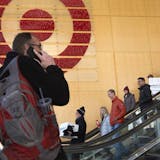Every two years, the Metropolitan Council distributes millions in federal funding for relatively small but significant transportation projects throughout the region, ranging from traffic signals to bike paths.
But this year, the regional planning body has $155 million more than usual for the work — enabling the council to double the number of projects funded with federal money — due to President Joe Biden's $1.2 trillion Infrastructure Investment and Jobs Act, which was signed into law in November 2021.
All told, some 91 projects intended to improve mobility and safety throughout the Twin Cities are receiving about $355 million in federal funds. Construction will begin next year and last through 2027.
Without the bipartisan infrastructure law, the Met Council would have received about $200 million in federal funds, enough to pay for 44 projects.
"The great thing this year is that we're able to fund a ton of projects as a result of the federal funding," said Charles Carlson, executive director of Metropolitan Transportation Services for the Met Council.
The projects require local governments and other entities receiving money to provide a local match. As Carlson noted, "It's really a way that folks can leverage scarce local dollars that can mean a significant improvement to the transportation system."
The grants are reviewed by the Met Council's little-known but influential Transportation Advisory Board (TAB), a 34-member body consisting mostly of elected officials. The full Met Council approved the grants earlier this month.
Edina Mayor Jim Hovland, who chairs the TAB, said its members "have a range of views on how transportation should operate across the spectrum." The hallmark of the board, he said, "is laying a geographic lens over the process to make sure it's fair."



